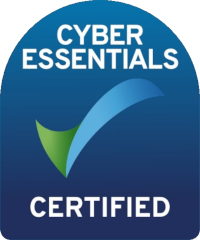BLOG
Accessibility Testing: How Can Organisations Make Digital Inclusivity A Reality?
Is accessibility testing part of your digital software development? Well, it should be! Accessibility testing is an integral part of the usability testing regime to support digital inclusivity for all. In collaboration with Pride Disability Awareness Month!
- Leadership
- Service Delivery
- Technology
- 21-07-2022
We need to be talking more about accessibility testing.
Accessibility testing is described as a component of usability testing. It is the practice of making an organisation's web and mobile apps used by as many people as possible. It makes apps and web pages accessible to those with disabilities, such as vision impairment, hearing disabilities, and other physical or cognitive conditions. The goal is to make the internet as accessible as possible and to be inclusive of all individuals and businesses in society.
A new accessibility report - the WebAIM Million: An accessibility analysis of the top one million home pages highlights that less than 1% of website home pages are likely to meet standard accessibility requirements. The results of the latest accessibility report by US charity WebAIM (Web Accessibility in Mind) found some disappointing figures for those who are passionate about making the World Wide Web a more inclusive place. Inclusivity matters. Similarly, government research conducted over the past two years has found that about 99% of public sector websites contained accessibility problems, reflecting the issue at large; digital exclusion for those disabilities (consisting of speech, vision, physical, cognitive or hearing disabilities) and a breach of regulatory requirements.
Accessibility testing is vital to ensure an organisation's website and services are available to a wide range of users and can be easily embedded into the software development process. We've gathered a list of our top 5 testing tools which can be used as part of your initial testing regime here.
“The power of the Web is in its universality. Access by everyone regardless of disability is an essential aspect. –Tim Berners-Lee”
How can organisations make digital accessibility and inclusivity a reality?
Digital inclusion and accessibility should be a priority in any organisation's digital roadmap. To progress forward, leaders must incorporate digital inclusion and accessibility priorities into their overarching strategies to be adopted by all product and service teams, and internal and external stakeholders. Once an organisation has legislated a digital inclusion and accessibility policy, it can embrace specific standards and frameworks.
Which legislative bodies set guidelines to follow?
Several government bodies focus on accessibility and inclusion. These are fantastic starting points for organisations looking to begin their digital inclusivity journey:
- Web Content Accessibility Guidelines (WCAG) are published by the World Wide Web Consortium (W3C), a global organisation responsible for setting standards and guidelines for the internet and other digital apps.
- The International Association of Accessibility Professionals (IAAP) helps accessibility specialists advance their professions and supports organisations in integrating accessibility into their products, services, offering and infrastructure.
- UK Equality Act, European Accessibility Act, Americans with Disabilities Act (ADA) and France Law N° 2005-102. All of these address accessibility and inclusion concerns in society.
The Web Content Accessibility Guidelines (WCAG) set out "technology-agnostic success criteria" which are verified, testable methods to measure accessibility. The latest version of WCAG has three tiers of conformance: A, AA and AAA. Level A sets a minimum level of accessibility to realise general accessibility for most scenarios. Ideally, AA conformance is the best option for all digital interfaces. AAA is the highest level, designed to meet the needs of people with limited motor control. Although it is invaluable to meet at this conformance level, it may not be cost-effective to attain level AAA for most corporate organisations and content. Therefore, "it should not be considered mandatory for an enterprise's digital products or websites." (Atos, 2022).
Every business and organisation is at a different phase in its digital transformation journey. In order to achieve digital transformation and digital maturity, digital accessibility and inclusion simply must be part of the digital strategy for execution. These improvements will not happen overnight or part as of a one-off isolated project, this is a long-term commitment to making digital benefits accessible for all!
We can help you identify where your website and organisational systems do not meet requirements and help you put a plan in place to fix them.
We use a range of tools such as WAVE, Tenon, aXe, and Lynx to identify areas that need improvement. Still, more importantly, our testing team includes testers who use assistive technologies on a daily basis. This gives us detailed insights into how the software performs and what areas could be improved - things software tools will never pick up. If you'd like to know more about how we can help your organisation, please get in touch today.
We invite you to a free, insightful discussion on 18th August where we cover all of the above and more. Sign up here.

Lucy Greenwell
Marketing Manager At Energise TechnologyLucy is passionate about writing about technology and third sector insight to help organisations meet the needs of stakeholders and end-users.
Contact us
If you'd like to know more about how we can help your organisation, please get in touch.
Subscribe to our newsletter
About Us
Providing technology solutions for charities, not-for-profits and education providers - helping them to deliver exceptional service to their users

Useful Links
Contact Us
Coates J & K
Priory Industrial Estate
Tetbury, Gloucestershire.
GL8 8HZ
01666 505718